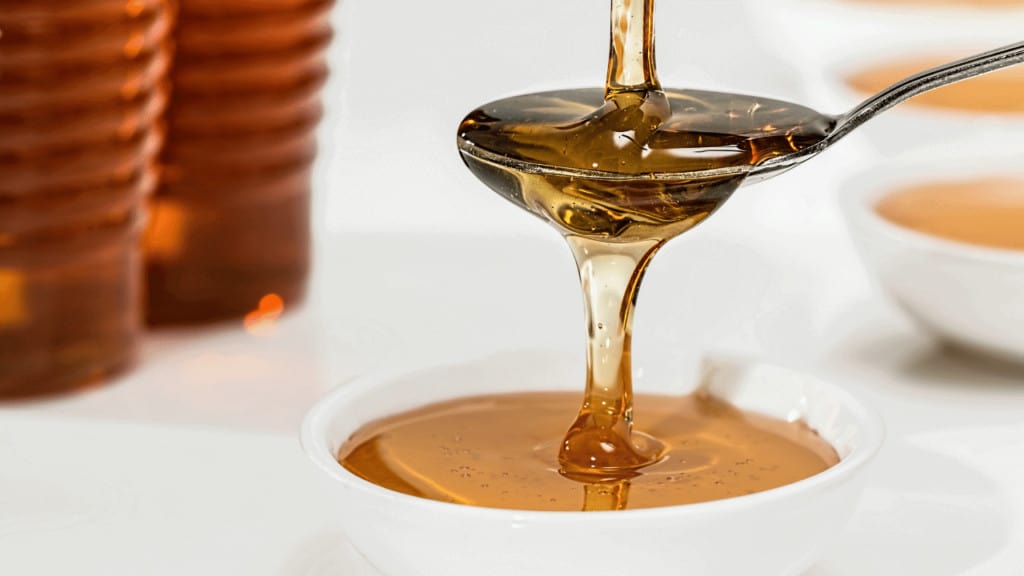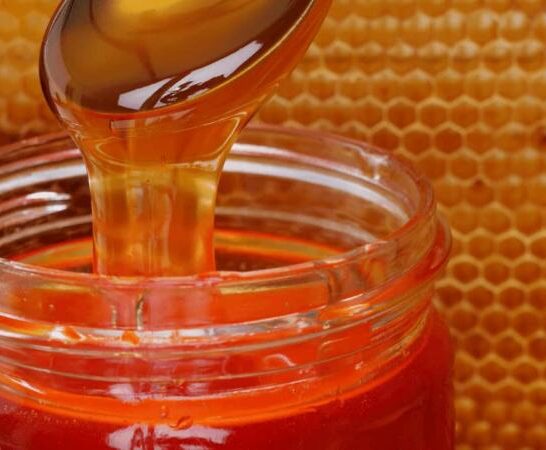What dissolves honey?
Real, raw honey crystallizes.
Honey is made up of enzymes, water, minerals, natural sugars, other carbohydrates, and vitamins according to Bee Culture.
One of the most important enzymes according to a scientific paper about honey published on the National Institutes of Health website is diastase.
Diastase can break down honey into simple sugar and is heat sensitive.
The chemical composition of honey generally ensures that it never goes bad, if it is stored and heated the right way.
The crystallization process is a natural process and has no real effect on the honey other than changing its texture, color, and density.
What Dissolves Honey?
Honey is naturally water-soluble. It dissolves in water. Firstly, honey should always be kept in a glass jar for safety reasons. Crystallized honey can be placed in a warm water bath. Or, fill a pot with water, about halfway. Place the honey jars in the pot. Bring the pot to a gentle boil, stirring the honey constantly. Alternatively, you can heat the honey in the microwave for 30 seconds.
The crystallization process of honey

Only real, raw honey crystallizes.
Real honey contains many healthy antioxidants and beneficial enzymes. There is a myth that crystallized honey has gone bad. However, this is not true.
The crystallization process of honey is a natural process.
It has no real effect on the honey, except that it changes its density, color, and texture.
The composition of honey is the saturated combination of two sugars, glucose, and sucrose. It also contains 70% carbohydrates and about 20% water.
Due to a large amount of sugar, crystals form over time.
Honey crystallizes in two forms, either smooth and fine or large and granular.
In this process, the fructose remains dissolved, while the glucose has a lower solubility.
Factors that influence crystalization in honey
Honey with a higher glucose content tends to crystallize more quickly.
The ratio of glucose to sucrose depends largely on which flower the nectar comes from.
Honey that crystallizes faster contains smooth, fine crystals.
The temperature at which the honey is made or stored also affects the rate at which it crystallizes.
Ideally, bees try to make or store honey at 95°F. This is the perfect temperature.
People tend to store honey at room temperature and rarely follow this rule. Therefore, the honey will begin to crystallize.
Pollen also affects the rate at which honey crystallizes.
Crystals tend to form on the particles in the honey. The more pollen the honey contains, the more crystals will form.
What dissolves honey

Honey can be dissolved at home.
One of the simplest methods of decrystallizing honey is to place the jar of honey in a hot water bath.
Alternatively, you can place the jars of honey in a pot. Fill the pot halfway with warm water. Bring the pot to a gentle boil. Stir the honey gently during the process.
This will help break up the crystals and return the honey to its liquid state.
The honey jars should be tightly sealed after the decrystallization process.
To get a quick result, simply microwave the honey jars for about 30 seconds. Note that this is neither advisable nor popular.
Microwaves are notorious for their uneven heating. If the honey is left in the microwave for too long, it can get burnt or start to caramelize.
Minimize crystalization

You can actively do something to prevent or inhibit the crystallization of your honey.
First, honey should always be stored in a cool, dry place.
Preferably and ideally, the best temperature for storing honey is at 50°-70°F (10-21 degrees Celsius).
Glass is the perfect material for storing honey. Proper storage is essential. Storing honey in plastic is not advisable at all. It oxidizes the honey.
When you store honey in a glass, it does not come in contact with air, liquid, or moisture.
However, the crystallization process cannot be controlled indefinitely; the honey will crystallize eventually.
One thing that the consumer cannot always control is the bottling and storage of goods purchased.
However, if a constant temperature can be maintained during the bottling process, It will help to reduce the chances of crystalization.
The ideal heat range is 104°-140°F (40-60 degrees Celsius).
Storing honey at temperatures of 70°F (21 degrees Celsius) and above will affect the quality and nutritional content of the honey.
Apply rapid heat treatment (140°-160°F) or (60-71 degrees Celsius) to prevent crystallization.
Frequently Asked Questions About What Dissolves Honey
How do you store honey after opening it?
The best location to store honey is in the kitchen pantry. The ideal temperature is between 50 °F and 70 °F (10-21 degrees Celsius). Always bear in mind that honey should not be stored at locations in the kitchen where it will be exposed to high temperatures. These include the refrigerator or in the sun. Store honey in glass containers in a cool, dry place.
Can honey be poisonous?
Honey can be very toxic when it is directly mixed with water. A study was published in the journal AYU which indicates that honey heated to a temperature of 140 °F will be toxic to consume. Mixing honey directly with hot water or milk will make it toxic. Caution should be applied when de-crystallizing honey not to overheat it during the process.
Conclusion
Honey that has crystallized can easily be revived. All the methods involve applying heat to the honey to break down the crystallization.
This can be done by using water or the microwave.
Honey that has crystallized is still perfectly fine to eat.
The crystallization process has no effect on the honey. Proper handling and storage are required.
But, there are other factors that still influence this process that cannot be stopped.

